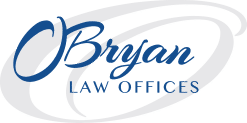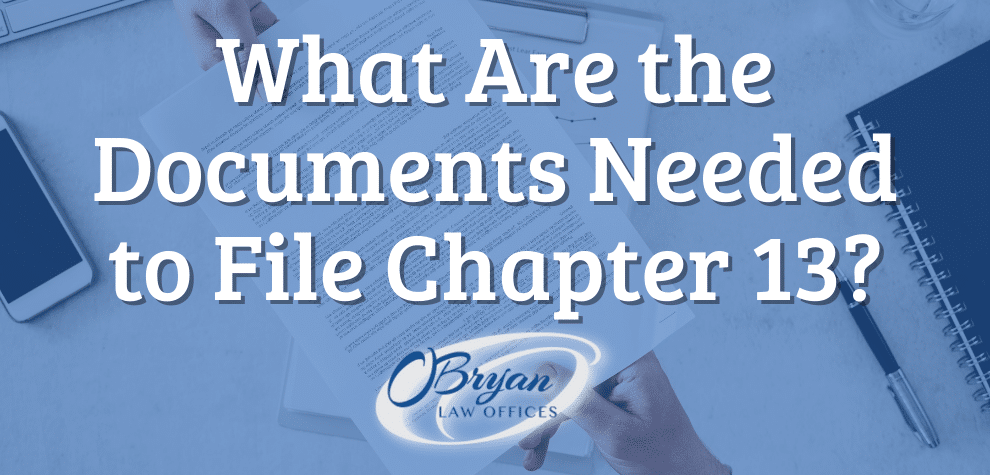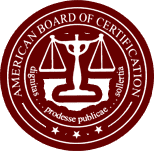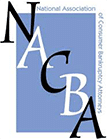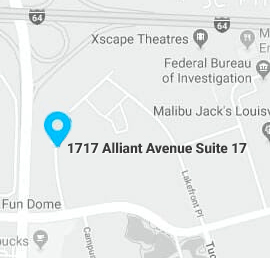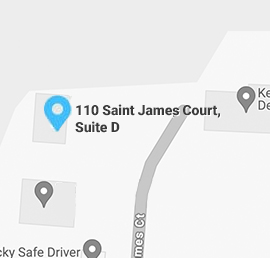Many people already understand that filing for bankruptcy is a complicated process. It involves significant consequences in terms of credit scores, finances, and much more. In fact, it has the potential to impact your daily life in terms of both property and credit. Naturally, we understand that it can be a stressful process. Luckily, hiring a Louisville bankruptcy attorney helps to simplify the process. We’ll outline the documents needed to file Chapter 13 bankruptcy for you.
At O’Bryan Law Offices, we’ll collect and organize your financial information to prepare you for the next step. If you need help filing for Chapter 13 bankruptcy, we’re here to help. As an experienced bankruptcy firm in Kentucky, our primary goal is to secure a stable financial future for our clients. Keep in mind that bankruptcy is not the end. Instead, it offers a new beginning. For more information about how we can help, please call our office at 502-339-0222 or fill out our online intake form.
What Is Chapter 13 Bankruptcy?
After Chapter 7 bankruptcy, Chapter 13 bankruptcy is the second most frequent kind of bankruptcy. Unlike the Chapter 7 income criteria, you can file a Chapter 13 bankruptcy regardless of whether your income is less than the median income level or whether you satisfy the means test. Nonetheless, your income will influence whether or not filing a Chapter 13 bankruptcy is a viable choice for you.
A reorganization is one term used to describe Chapter 13 bankruptcy. Unlike a Chapter 7 bankruptcy, a Chapter 13 bankruptcy requires you to reimburse a fraction or all of your obligations in order to finish your case and obtain a full discharge. You must demonstrate that you have adequate money to keep up with your Chapter 13 payments for the length of your case.
Another significant distinction between a Chapter 7 and a Chapter 13 bankruptcy is the length of the case. A Chapter 7 case lasts 4 to 6 months on average, but a Chapter 13 case lasts 3 to 5 years. You will make monthly payments to your appointed trustee for the 3 to 5 years while your Chapter 13 case is ongoing.
In exchange for debt relief, you must give up your unprotected property in a Chapter 7 case, rather than making monthly payments as you would in a Chapter 13. Your unprotected property is auctioned in a Chapter 7 bankruptcy, and the revenues are divided to your creditors. Because you’ll be paying your creditors the value of your unprotected property throughout the course of the Chapter 13 plan, you’ll be able to avoid having your unprotected property sold by the trustee.
What Are the Steps in Chapter 13 Bankruptcy?
In general, the first steps in filing a Chapter 13 bankruptcy are identical to those in filing a Chapter 7 bankruptcy. It doesn’t get much more difficult until you have to figure out how much your monthly Chapter 13 payments will be based on a variety of criteria. Below, we outline the steps to filing for a Chapter 13 bankruptcy.
Collect the Documents
The credit reporting companies, which include Experian, TransUnion, and Equifax, will need to provide you with copies of your credit report. Once a year, you may receive a free copy of your credit reports.
You’ll need to figure out how much debt you owe and who your creditors are before you start filling out any papers. Keep in mind that your credit report will not include all of your debts. Regardless of whether your debts are reported on your credit reports, you must declare them fully on your bankruptcy paperwork. Make a list of everything you’ve acquired thus far.
Once you obtain your credit report, we also recommend obtaining the following documents.
- The past 4 years of tax returns
- Paystubs or some other proof of income from the past 6 months
- The past 3 to 6 months of bank account statements
- Recent real estate tax bills and mortgage statements
- Residential lease agreements
- Recent brokerage account statements or retirement accounts
- Appraisals or valuations of real estate that you own
- Recent car loan statements
- Other documents related to debts, income, and assets
These documents can aid you in obtaining a more full and accurate view of your financial situation. It will be much easier to fill out your bankruptcy paperwork if you have them on hand.
Analyze Your Debt
Now you have collected your debts. They need to be analyzed and labeled as the types of debts they are. For example, they might be credit card debts, loans, or medical bills. After you’ve determined the sort of debt you owe, you’ll need to determine if your obligations are secured or unsecured. Secured debts are those that are secured by some form of collateral. Secured debts include your home and auto loan, which are two of the most typical types. Credit card debts, medical bills, payday loans, and any other debt not secured by a specific piece of property are all examples of unsecured debts.
Determine which debts are priority debts and which debts are non-priority obligations as the following stage in your debt analysis. Child support payments, domestic support responsibilities, and some tax debts are all common priority debts. Your repayment amount and the sequence in which your trustee distributes your Chapter 13 plan payments each month will be affected by whether your debts are secured or unsecured, priority or non-priority.
Inventory Your Property
Make a list of everything you possess and how much each piece of property is worth. This stage is crucial because you’ll need to know what you own and how much of it you can keep by filing for bankruptcy. Although a Chapter 13 bankruptcy permits you to preserve and safeguard all of your property, you will be required to pay some creditors a sum equivalent to the value of your unprotected property as part of your Chapter 13 plan. To put it another way, you may anticipate to pay an amount that is equal to the amount that certain creditors would receive if you had filed a Chapter 7 case.
Create a Budget and Analyze Your Income
If you are jobless, you can file a Chapter 13 bankruptcy. You must, however, be getting income from a verified source other than your job. Provided you get government benefits, financial aid from friends or family, or monthly pension payments, for example, you can file a Chapter 13 if you can demonstrate that your income is sufficient to make monthly plan payments.
You will not be able to proceed if you have created a budget and discovered that you do not have enough money each month to meet your monthly living costs in addition to your Chapter 13 monthly plan payments. In order to move forward with your case, you’ll need to show the bankruptcy courts that you have a viable plan.
Take Your First Credit Counseling Course
You must finish a credit counseling course recognized by the Department of Justice before filing your Chapter 13 bankruptcy paperwork. The training takes around an hour to complete and may be done online or over the phone. Depending on the supplier, the price might range from $10 to $50. If your family income is less than 150% of the federal poverty level, you may be eligible for a fee waiver. You’ll receive a certificate of completion once you’ve finished the course. You must maintain a copy of this document and include it with your bankruptcy filing.
Fill Out Your Bankruptcy Forms
This is likely to be the most lengthy part of the bankruptcy procedure. You are asked about everything you earn, spend, possess, and owe on the forms. Your Chapter 13 petition consists of 23 distinct forms containing around 70 pages. You must submit all of your financial information and be able to provide the court with a complete and accurate financial picture. In a Chapter 13 case, writing your Chapter 13 repayment plan is a component of filling out the bankruptcy papers.
File the Chapter 13 Bankruptcy Petition
After you’ve finished filling out and reviewing your bankruptcy paperwork, print it off, sign the signature pages, and present it to court. Along with your printed bankruptcy paperwork, don’t forget to send your credit counseling certificate.
A Chapter 13 case requires a filing fee of $313. When you go to file your paperwork, you’ll have to pay the whole sum to the court. When filing a Chapter 13 case, unlike a Chapter 7, there is no cost waiver alternative. Make certain you print the precise number of copies required by your local bankruptcy court. Before filing for bankruptcy, visit your local bankruptcy court to find out how many copies you’ll need.
Send the Documents to the Trustee
Your trustee, who has been appointed to monitor your case, has the authority to make reasonable document demands. Your trustee will ask for specific financial papers, including tax returns, paystubs, and bank statements before your creditors’ hearing.
These supporting papers will be used by your trustee to compare and verify the information you submitted on your bankruptcy filings. If you do not provide the papers requested by your trustee, your case will be dismissed. There will be no discharge for you.
Attend the 341 Meeting
You’ll meet with your Chapter 13 trustee around a month after filing your bankruptcy petition. You will not meet the judge appointed to your case on this day, so don’t be concerned. Creditors, on the other hand, have a legal right to attend your 341 meeting, although they rarely do.
You’ll be asked to prove your identification and submit supporting papers during your appointment with your trustee. Your trustee’s job is to go over your supporting papers and testify at your meeting to ensure that your bankruptcy filings are filled out correctly and that your suggested plan is viable.
Your next public appearance will be at your confirmation hearing. On this day, you will appear in front of a court. The court will determine whether or not to certify your Chapter 13 plan and proceed with your case. Your case will be confirmed if neither your trustee nor your creditors raise any concerns.
Maintain Your Chapter 13 Plan Payments
Congratulations on receiving approval for your Chapter 13 plan! You must now make monthly plan payments for the next 3 to 5 years before your case may be properly concluded and your release filed.
The first payment must be made within 30 days of filing your bankruptcy paperwork. Remember that your monthly plan payments may increase or decrease until your case is verified. Your case will be dismissed and you will not be discharged if you fall behind on your payments and are unable to catch up within a reasonable length of time.
Take Your Second Debt Education Course and Receive Your Discharge
The final step before getting your discharge is to complete the second debtor education course. At the completion of your case, if you followed the conditions of your Chapter 13 plan, you will be discharged. Most unsecured debts will have any outstanding balances forgiven.
What Are the Documents Needed to File Chapter 13?
Below, we list the necessary documents needed to file Chapter 13. Your attorney will need these to give you the best possible advice and representation.
Financial Records
Some of the first papers you should gather are your bank records. These documents will assist you in determining which kind of bankruptcy is appropriate for you. If your financial papers demonstrate that you have a steady income, Chapter 13 bankruptcy may be the best option for you. This might have serious consequences because Chapter 13 allows you to maintain your home and pay off your debts over time. The following are examples of financial records.
- Recent bank statements
- Bills from your creditors
- Recent payment coupons for vehicles, real estate, and student loans
- Invoices or bills from purchases in the last year
- Receipts
Legal Records
Disclose to your attorney any legal background or ongoing litigation that involves you. Previous judgements against you reveal debts that attorneys consider when evaluating whether bankruptcy is best for your case. Furthermore, any pending lawsuit or existing court order will influence how much you may pay your creditors right now. The following are examples of legal documents.
- Previous litigation files, particularly judgments against you
- Files from previous attorneys
- Divorce decrees and other court orders that require child support or maintenance obligations
Additional Documents
The following is a list of assets you hold as well as what you’ll need to prove your income. It’s critical to organize your assets properly and thoroughly in order to demonstrate that you have a defined income level. This income determination might be crucial in demonstrating your ability to repay your obligations over time or establishing a lack of income.
- Canceled checks for expenses you cannot document in another way
- Correspondences and letters regarding or with creditors
- All insurance policies
- Past three years of tax returns
- Vehicle titles
- Your mortgage or lease
- Signed promissory notes
- Any documents related to other debts that you owe
- Proof that someone else owes you money
- Lawsuits someone served you
Contact O’Bryan Law Offices Today
Bankruptcy is a complex procedure that molds to your individual situation. To learn more about the procedure or if you need assistance gathering the paperwork you’ll need to file your case, contact a skilled bankruptcy attorney with O’Bryan Law Offices. We’ll use our years of experience to your advantage in any type of bankruptcy case. To schedule a consultation with us, please call 502-339-0222 or fill out our online intake form today.
